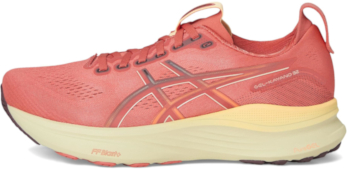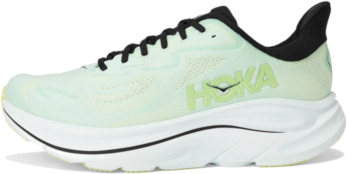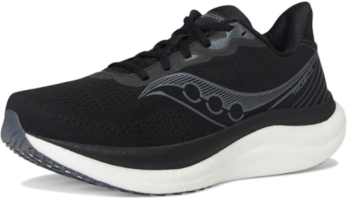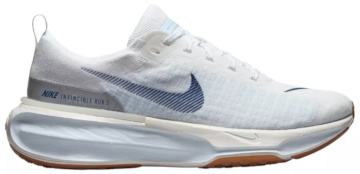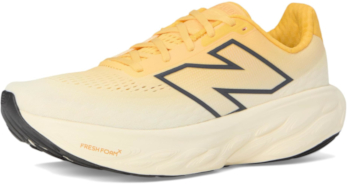As we age, our bodies become a bit more… opinionated, especially when it comes to running. Aches, stiffness, and overuse injuries start showing up like uninvited guests at a backyard barbecue. And one of the loudest complainers? Shin splints. That sharp, nagging pain in your lower legs can turn even the most enthusiastic jog into a slow shuffle back to the couch.
But here’s the good news: the right running shoes can make a world of difference. With proper cushioning, joint-friendly support, and stability features designed to reduce stress on your lower legs, older runners can run smarter, and far more comfortably. In this 2025 guide, we’ve rounded up the best running shoes for shin splints, carefully selected with older runners in mind.
Whether you’re easing into a new fitness routine or trying to stay ahead of Father Time (and shin pain), these top picks will help you keep moving forward—pain-free, confident, and without muttering “never again” after every run.
Table of Contents
- What Are Shin Splints and Why Do They Happen?
- Key Features to Look for
- The Best Running Shoes for Shin Splints
- Shoes to Avoid if You Have Shin Splints
- Extra Tips for Managing and Preventing Shin Splints
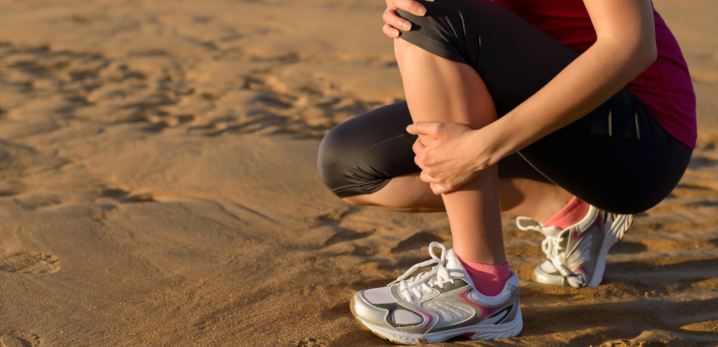
What Are Shin Splints and Why Do They Happen?
Shin splints, officially known as medial tibial stress syndrome (because everything sounds scarier in medical jargon), are that nagging pain and inflammation along the inner edge of your shinbone (a.k.a. the tibia). This delightful discomfort tends to show up during or after exercise, especially activities with lots of repetitive impact like running, walking on unforgiving surfaces, or pretending you’re still 25 during a jump-heavy workout. It’s your body’s not-so-subtle way of saying, “Hey, maybe let’s ease into this next time.”
What Causes Shin Splints?
Shin splints happen when the muscles, tendons, and bone tissue around your shin decide they’ve had enough and start sending pain signals like a drama queen with a megaphone. It’s basically your body’s way of saying, “Too much, too soon!” Several usual suspects contribute to this overuse, and no, unfortunately, enthusiasm isn’t a substitute for preparation:
- Sudden Increase in Activity. Jumping into a running routine too quickly, especially with higher intensity, longer distances, or more frequent workouts, can overload the lower leg muscles that aren’t yet conditioned.
- Improper Footwear. Wearing shoes that lack proper support, cushioning, or arch alignment can lead to biomechanical imbalances that strain the shins.
- Overpronation or Flat Feet. People whose feet roll inward excessively (overpronation) or have low or collapsed arches often experience shin splints due to increased stress on the inner leg muscles.
- Hard or Uneven Surfaces. Running or walking on concrete, asphalt, or sloped terrain increases impact forces on your legs, contributing to shin pain, especially for older adults with reduced joint cushioning.
- Muscle Weakness or Imbalance. Weakness in the calves, ankles, or core can shift the workload to the shins, leading to fatigue and inflammation over time.
- Worn-Out Shoes. Even good running shoes lose their shock absorption over time. Running in old or compressed shoes can reduce protection and increase your risk of injury.
Key Features to Look for in the Best Running Shoes for Shin Splints
Cushioning
For older runners battling or trying to dodge shin splints, cushioning isn’t just a luxury feature, it’s a full-blown necessity. As we age, our bodies lose a bit of that natural shock absorption (thanks a lot, gravity), meaning our muscles and joints pass the impact baton straight to our shins. That’s why choosing the right cushioning is critical for reducing stress on your lower legs and keeping those dreaded shin splints at bay.
Look for running shoes with high-quality midsoles made from soft, responsive foam, the kind that feels like your feet are bouncing on marshmallows, not bricks. Your legs will thank you, and your shins might just stop filing daily complaints.
Arch Support
For older runners dealing with shin splints, arch support isn’t just helpful; it’s mission-critical. As we age, our arches can start to collapse like a tired lawn chair, losing structural strength and throwing off how our feet absorb impact. This imbalance shifts extra stress to the shin muscles and tendons, which respond the only way they know how, with pain and protest.
That’s why proper arch support is essential. You need something firm enough to keep your foot alignment in check, but flexible enough to adapt to the ever-changing landscape of aging feet (because yes, even your arches are going through “phases”). With the right support underfoot, you can run smoother, hurt less, and leave those shin splints in the dust, where they belong.
Heel-to-toe Drop
The heel-to-toe drop, also known as offset or pitch (because running shoes love having three names for everything), refers to the difference in height between the heel and the forefoot of a shoe. While it may sound like a tiny detail, for older runners dealing with shin splints, this little number can make a big difference in comfort, stride mechanics, and how much your lower legs complain after a run.
For most older runners, a moderate to higher heel-to-toe drop (think 8mm to 12mm) is the sweet spot. It helps reduce strain on the shins by shifting some of the workload to the hips and knees, which, let’s face it, are probably already sending passive-aggressive messages anyway. But hey, better to spread the stress around than let your shins take all the heat!
Stability Vs Neutral
When it comes to managing or avoiding shin splints as an older runner, the choice between stability and neutral running shoes boils down to one key question: how does your foot behave when it hits the ground? In other words, do you overpronate (your foot rolls inward more than it should), or do you have a neutral gait?
If you’re an overpronator, and many older runners are, thanks to arches that have decided to flatten out with age like deflated air mattresses, stability shoes are your new best friend. They’re designed to support your arch, rein in that excessive inward roll, and take the pressure off the tibialis anterior (a.k.a. the overworked shin muscle that’s been throwing tantrums). Think of stability shoes as gentle correction officers for your feet—firm, fair, and fabulous at preventing shin splints.
On the flip side, if your foot strikes and rolls naturally, you’re a neutral gait runner, and you get to enjoy the freedom of neutral running shoes. These don’t try to “fix” anything; they just offer balanced cushioning and let your foot do its thing, all while protecting your joints from the harsh realities of impact. It’s like giving your feet a soft, shock-absorbing hug every time they hit the pavement.
So whether you pronate, overpronate, or just want to stop hearing your shins complain, picking the right shoe type is the first step toward pain-free miles, and fewer dramatic foot monologues.
Fit and comfort
For older runners battling shin splints, the fit and comfort of a running shoe are just as important as fancy support and plush cushioning because even the best shoe won’t help if it doesn’t fit well. As we age, our feet like to reinvent themselves: arches drop, toes spread out like they’re claiming more real estate, and joints get a little… opinionated.
That’s why finding the right fit is crucial. A well-fitted shoe can prevent irritation, eliminate pressure points, and keep your shins (and the rest of your body) from staging a full-blown protest. Because let’s face it—your running shoes should feel like a welcome home for your feet, not a poorly planned renovation.
Ideal fit and comfort features to look for:
- Roomy Toe Box. Older feet often widen or become more sensitive with age. A spacious toe box allows toes to splay naturally during each step, improving balance and relieving pressure on the forefoot and shins.
- Snug (But Not Tight) Midfoot and Heel Fit. The ideal fit offers a secure hold around the midfoot and heel to prevent excessive movement inside the shoe, which can cause shin fatigue, blisters, or instability, and unnatural foot mechanics that lead to overuse injuries.
- Comfortable, Padded Interior. Older runners are more likely to have sensitive skin, bunions, or pressure points, so comfort features inside the shoe are vital.
- Supportive Arch Contour (Without Overcorrection). Whether you need a neutral or stability shoe, the arch area should feel supportive, not hard or poking, adaptive, meaning it flexes slightly with the foot, and natural, not forced or raised too high.
- True-to-Size Fit with Room for Swelling. Older runners may experience mild swelling in the feet after activity. Make sure to fit shoes in the afternoon or evening when feet are largest, leave a thumb’s width of space between the longest toe and the shoe tip, and avoid shoes that feel “perfect” when new but tighten up during a run.
Disclaimer! This blog post is for those dealing with mild, manageable shin splints, the kind that’s more “annoying twinge” than “call an ambulance.” It’s especially geared toward our fellow older runners who’ve started making more noise getting off the couch than during their 10Ks. We’re not doctors (we don’t even play one on TV), so please don’t treat this as medical advice. If your shin is staging a full rebellion, it’s best to chat with a real professional.
The Best Running Shoes for Shin Splints
Here’s a list of the best running shoes for shin splints (in no particular order):
ASICS Gel-Kayano 32
The ASICS Gel-Kayano 32 stands out as one of the top running shoes for older runners with shin splints due to its exceptional blend of stability, cushioning, and support. Built for overpronators and those needing extra protection from impact-related injuries, this shoe is engineered to address many of the biomechanical challenges older runners face, including those that lead to shin splints.
1. Advanced Stability to Reduce Overpronation Stress.
One of the leading causes of shin splints, especially in older runners, is overpronation, where the foot rolls too far inward during stride. The Gel-Kayano 32 features ASICS’ updated 4D Guidance System, which helps:
- Guide the foot into a more efficient position
- Minimize excessive rolling and torsion
- Reduce stress on the tibia and shin muscles
This smart stability makes the Kayano a strong choice for runners with flat or falling arches and those recovering from impact-related injuries.
2. Premium Cushioning for Shock Absorption
Older runners are more vulnerable to joint stress due to age-related reductions in muscle elasticity, cartilage, and bone density. The Gel-Kayano 32 addresses this with a dual-layer midsole that includes:
- FF BLAST PLUS for soft, lightweight cushioning
- PureGEL technology in the rearfoot for added impact protection
This combination reduces shock during heel strike, which directly helps ease the load on shin muscles and prevents painful flare-ups.
3. Comfortable, Supportive Fit for Aging Feet
The Kayano 32 offers a roomy toe box, plush interior padding, and a secure heel counter, all essential features for older runners, whose feet may have widened or become more sensitive over time. The engineered mesh upper also adapts to foot swelling and shape changes, helping reduce pressure points and enhance comfort during longer runs or walks.
4. Durable, Long-Lasting Support for Consistency
Consistency is key for older runners managing shin splints, and the Kayano 32 delivers reliable performance across hundreds of miles. Its outsole is built for longevity, and the midsole foam resists premature compression, so older runners can expect a shoe that holds up well and maintains support longer than most.
Brooks Glycerin 22
The Brooks Glycerin 22 is an outstanding choice for older runners managing or recovering from shin splints. Known for its luxurious cushioning, adaptive fit, and smooth ride, the Glycerin 22 is engineered to minimize impact stress while maximizing comfort, two essentials for aging runners prone to overuse injuries in the lower legs.
1. Max-Cushioning to Absorb Repetitive Impact
Shin splints are often caused by repeated pounding on hard surfaces, which overloads the tibia and surrounding muscles. The Glycerin 22 features DNA Tuned cushioning, Brooks’ softest and most responsive foam, now infused with nitrogen for a plush, lightweight feel that doesn’t break down too quickly.
For older runners with less natural shock absorption due to age-related muscle and joint changes, this cushioning:
- Protects the lower legs and joints from repetitive impact
- Helps reduce stress on the shins during heel strike and transition
- Makes running feel smoother and easier on sensitive areas
2. Neutral Support for Runners Who Don’t Overpronate
If you’re an older runner with a neutral gait or high arches, the Glycerin 22 is ideal. It provides:
- A stable yet flexible base for natural foot movement
- Gentle guidance without corrective posts
- Balanced arch support that relieves pressure without overcorrection
It’s also a great shoe for pairing with custom orthotics, thanks to its deep, removable insole and accommodating design.
3. Plush Interior and Adaptive Fit for Aging Feet
The Glycerin 22’s upper uses engineered mesh that stretches and adapts to changes in foot shape, a common concern for older runners whose feet may have flattened, widened, or developed bunions. The shoe also features:
- A softly padded heel collar and tongue to prevent irritation
- A roomy toe box that allows natural toe splay
- A secure, glove-like midfoot fit for stability without tightness
These comfort-focused features help prevent blisters, hot spots, and pressure points that can throw off gait and worsen shin pain.
4. Smooth Transitions for Less Lower-Leg Fatigue
The shoe’s heel-to-toe drop of 10mm encourages a gentle heel strike and easy forward roll, reducing the need for excessive push-off from the calves and shins. For older runners with limited ankle mobility or recovering from shin splints, this creates a more efficient, less taxing stride.
Hoka Clifton 10
The Hoka Clifton 10 is one of the most reliable running shoes for older runners battling shin splints, thanks to its signature blend of maximum cushioning, lightweight feel, and smooth transitions. Designed to reduce impact forces and improve stride efficiency, the Clifton 10 helps protect aging joints and muscles, especially in the lower legs where shin splints often take hold.
1. Maximal Cushioning That Eases Shin Impact
At the core of the Clifton 10 is Hoka’s signature full-compression EVA midsole, known for delivering a soft, forgiving ride without feeling sluggish. This generous stack of cushioning:
- Absorbs impact during heel strike, reducing strain on the tibia and anterior muscles
- Lessens vibration through the shins, one of the primary causes of shin splints
- Provides a protective buffer for older runners who need more joint-friendly support
This plush underfoot feel is ideal for aging bodies that benefit from extra shock absorption with every step.
Saucony Triumph 23
If you’re dealing with shin splints, the Saucony Triumph 23 brings the kind of upgrades that can ease the stress on your lower legs. This version is sleeker and significantly lighter, which means less strain with every step and fewer jolts traveling up to your shins. The lockdown is better than before too, with a performance-oriented fit that keeps your foot secure and reduces excess motion, a small but important detail when you’re trying to avoid aggravating shin pain.
The real star is the new PWRRUN PB midsole. It’s softer, more responsive, and paired with a 37/27 mm stack height that delivers max-cushion protection mile after mile. The wider midfoot and improved arch support add extra stability, giving you smoother transitions and a more supportive base. Put it all together and you get a plush yet controlled ride that helps absorb impact, protect your joints, and give your shins the recovery-friendly platform they need.
Nike Invincible 3
The Nike Invincible 3 is one of the plushest, most spring-loaded shoes you can slip on, and it shines especially bright for older runners dealing with shin splints. With Nike’s ZoomX foam underfoot, the same elite cushioning used in marathon super shoes, you get a mix of deep softness, lively bounce, and impressive shock absorption that takes pressure off aging joints and sensitive shins. The wide midsole platform adds welcome stability, giving you a more grounded, confident stride, while the rocker geometry smooths each transition so your calves and shins don’t have to work overtime. For runners who fatigue quickly or have limited ankle mobility, that effortless roll-through can make daily miles feel noticeably easier.
Up top, the Flyknit upper keeps the fit breathable, forgiving, and surprisingly secure. It adapts well to wider or slightly swollen feet, wraps the midfoot with gentle support, and adds cushioned comfort around the collar and heel. Pair all of that with the Invincible’s stable base and energetic ride, and you get a rare combination—max cushioning that feels fun, supportive, and protective for older runners who want to stay comfortable, reduce shin irritation, and keep logging miles with confidence.
SHOP AT DICK’SNew Balance Fresh Foam X 1080v14
The New Balance Fresh Foam X 1080v14 is a standout daily trainer for older runners struggling with shin splints. Built with premium cushioning, a smooth ride, and a foot-friendly fit, it’s designed to reduce lower-leg strain while enhancing comfort and support. Whether you’re returning from injury or simply looking for a forgiving shoe for daily miles, the 1080v14 offers the right balance of impact protection, stability, and softness for aging legs.
1. Fresh Foam X Midsole Softens Every Step
The 1080v14 features an updated Fresh Foam X midsole, designed to be ultra-soft underfoot without sacrificing responsiveness. This plush cushioning:
- Absorbs impact on heel strike, minimizing shock that travels up the tibia
- Reduces stress on the shin muscles, especially during long runs or walks
- Supports a smooth and controlled landing, essential for shin splint recovery and prevention
This is especially valuable for older runners whose joints and bones may no longer handle repeated impact as well as they used to.
2. Balanced Heel-to-Toe Drop for Shin Relief
With an 8mm drop, the 1080v14 offers a natural yet supportive platform that eases pressure off the shins and calves. This drop helps:
- Encourage efficient forward motion with less effort from the lower leg
- Support proper form during heel-to-midfoot landings
- Decrease the overuse of the anterior tibialis, the muscle commonly inflamed in shin splints
The result is a more fluid, comfortable stride with less fatigue and irritation.
3. Supportive Upper and Flexible Fit for Aging Feet
The 1080v14’s structured yet stretchy upper adapts well to age-related foot changes such as swelling, bunions, or fallen arches. It features:
- A roomy toe box for natural toe splay
- A heel-hugging design that keeps your foot securely in place
- Soft padding in the collar and tongue for all-around comfort
Older runners will appreciate the way the shoe cradles the foot without pressure points, helping to maintain consistent gait and reduce strain on the lower legs.
4. Stable Platform Without Added Bulk
The base of the 1080v14 is broad and inherently stable, providing a confident feel underfoot without the need for motion control features. This is ideal for neutral runners who still want extra support and a smooth, guided ride. For those who use orthotics, the shoe’s removable insole allows for easy customization.
Mizuno Wave Rider 28

The Mizuno Wave Rider 28 blends classic responsiveness with modern cushioning, making it a strong contender for older runners dealing with shin splints. Designed to offer a smooth, stable, and well-cushioned ride, the Wave Rider 28 delivers the protection and comfort needed to reduce tibial stress, while remaining light and lively enough to keep running enjoyable.
1. Mizuno Wave Plate for Guided Stability
At the heart of the Wave Rider 28 is Mizuno’s signature Wave Plate technology, which disperses impact forces and enhances forward propulsion. For older runners prone to shin splints, this provides:
- Better shock distribution across the foot and up the leg
- Mild stability to help guide the foot into a more neutral, efficient stride
- A smoother transition from heel to toe that minimizes lower leg fatigue
This natural, non-intrusive stability is ideal for aging runners who don’t need full motion control but benefit from subtle support to correct stride mechanics and prevent overuse injuries.
2. ENERZY Foam Midsole for Soft Yet Responsive Cushioning
The Wave Rider 28 features an updated Mizuno ENERZY midsole, designed to be:
- Softer than past versions for enhanced shock absorption
- More responsive to return energy without tiring the legs
- Durable enough for consistent performance over longer periods
This cushioning system helps protect older joints and shins from repetitive impact, which is especially valuable for runners with decreased natural resilience in the muscles and bones of the lower legs.
3. Heel-to-Toe Drop and Rockered Feel Aid Shin Recovery
With a 12mm heel-to-toe drop, the Wave Rider 28 is particularly effective for older runners who:
- Tend to land on their heels
- Need to offload strain from the calves and shins
- Want smoother, more effortless forward motion
The higher drop, combined with a gently rockered geometry, promotes a fluid transition that reduces stress on the tibialis anterior, the key muscle involved in most shin splint pain.
4. Secure Fit and Breathable Comfort for Aging Feet
Older runners often need a shoe that supports foot structure changes without sacrificing comfort. The engineered mesh upper in the Wave Rider 28 is:
- Lightweight and breathable, helping manage swelling
- Snug in the midfoot with a roomy toe box for natural splay
- Built with a secure heel fit, reducing internal foot movement that can lead to irritation or altered stride
Together, these design elements keep the foot stable and aligned, critical for preventing shin strain.
Heads up: As an Amazon Associate, we earn from qualifying purchases.
Shoes to Avoid if You Have Shin Splints
- Minimalist shoes or racing flats with little support. While minimalist shoes and racing flats may appeal to some runners for their lightweight feel and ground connection, they are generally not suitable for older runners, especially those dealing with shin splints. These types of shoes lack the structure, cushioning, and support necessary to protect aging joints and muscles from repetitive impact.
- Worn-out shoes with compressed midsoles. Running in worn-out shoes is one of the most overlooked causes of shin splints, especially for older runners. As shoes accumulate mileage, their midsoles compress, cushioning breaks down, and structural support fades. For older adults whose joints, muscles, and tendons are more vulnerable to stress, continuing to run in these degraded shoes can lead directly to pain, including shin splints.
- Improper fit (too tight, too loose). For older runners, a proper shoe fit is more than just a comfort issue; it’s a critical factor in preventing and managing shin splints. Shoes that are too tight or too loose can alter your natural gait, increase muscle strain, and compromise foot stability, all of which can contribute to lower leg pain and injuries. When you’re already more susceptible to joint stress and soft tissue fatigue, as many older adults are, wearing poorly fitting shoes becomes a risk you can’t afford to take.
Extra Tips for Managing and Preventing Shin Splints
Gradual Mileage Increases
For older runners managing or recovering from shin splints, one of the most important training strategies is to increase mileage slowly and intentionally. While it can be tempting to push harder in pursuit of progress, ramping up too quickly is one of the leading causes of shin splints, especially in aging bodies that take longer to adapt to physical stress.
Strength Training and Calf Stretches
For older runners, managing and preventing shin splints isn’t just about wearing the right shoes or pacing your mileage, it also requires building strength and maintaining flexibility in key muscle groups. Two of the most effective strategies for long-term shin health are strength training and calf stretching. Together, they help reduce the load on the shins, improve running efficiency, and lower the risk of injury.
Using Orthotics or Insoles, If Needed
As we age, the natural biomechanics of the feet begin to shift, arches may flatten, muscles weaken, and joints become more sensitive to impact. For older runners dealing with shin splints, orthotics or insoles can play a critical role in restoring alignment, improving comfort, and reducing strain on the lower legs. While not every runner needs them, using the right insert can be a game-changer for injury prevention and recovery.
Cross-training to Reduce Repetitive Impact
For older runners, especially those dealing with shin splints, cross-training is not just a nice-to-have; it’s a vital part of a sustainable, injury-resistant fitness routine. Shin splints are caused by repetitive impact and overuse of the lower legs, and as the body ages, it becomes less resilient to this kind of stress. Incorporating low-impact cross-training allows older runners to stay active, maintain cardiovascular fitness, and promote recovery, all while reducing the pounding that causes shin pain.
Best Running Shoes for Shin Splints FAQs
What are the best running shoes for shin splints in 2025?
The best running shoes for shin splints in 2025 include options with excellent cushioning and support, such as the ASICS Gel-Kayano 32, Brooks Glycerin 22, Nike Invincible 3, Saucony Triumph 23, and Hoka Clifton 10.
How do running shoes help prevent shin splints?
Running shoes help prevent shin splints by providing adequate arch support, shock absorption, and stability, which reduces impact on the shins and promotes proper running form.
Are minimalist running shoes suitable for individuals with shin splints?
Minimalist running shoes are generally not recommended for individuals with shin splints, as they may lack the necessary cushioning and support that can help alleviate pain and prevent further injury.
Should I consider my running gait when choosing shoes for shin splints?
Yes, considering your running gait is crucial when choosing shoes for shin splints, as it helps identify the appropriate level of support and cushioning needed to accommodate your running style.
How often should I replace my running shoes to prevent shin splints?
It is recommended to replace running shoes every 300 to 500 miles, or approximately every six months, to ensure optimal cushioning and support, which can help prevent shin splints.
Final Thoughts on the Best Running Shoes for Shin Splints
Shin splints don’t have to slow you down, especially when you’re equipped with the right footwear. As an older runner, your shoes play a crucial role in protecting your joints, absorbing impact, and supporting proper alignment with every step. The best running shoes for shin splints are designed to do exactly that: reduce strain, boost comfort, and help you enjoy running without pain.
Whether you’re just getting started or have been running for years, investing in supportive, well-cushioned shoes can help you stay active and injury-free well into your 50s, 60s, and beyond. Listen to your body, choose footwear that fits your unique stride, and keep moving forward, one comfortable step at a time.
(This content was created with the help of AI.)
You may also like:

